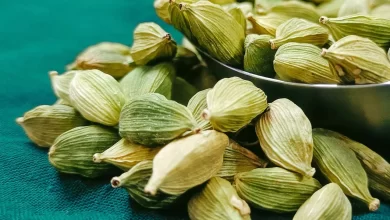Sunflowers are bright and beautiful flowers that are loved by many people around the world. The scientific name for the sunflower is Helianthus annuus, which comes from the Greek words helios meaning “sun”, and anthos meaning “flower.” The sunflower is a member of the Asteraceae family and is native to North and South America. Sunflowers are known for their distinctive appearance, with large yellow or brown petals arranged around a central disk. The flowers can range in size from small to very large, with some varieties growing up to 16 feet tall. Sunflowers are often used for decorative purposes, such as in floral arrangements or as ornamental plants in gardens. They are also an important crop, with the seeds being used for food, oil, and bird seed. Sunflower oil is a popular ingredient in cooking, and sunflower seeds are a healthy snack that is rich in nutrients such as protein, fibre, and vitamins. Additionally, sunflowers are a symbol of happiness, positivity, and warmth and are often associated with the summer season and the sun.
- Sunflowers have been cultivated for thousands of years by indigenous peoples in the Americas, who used them for food, medicine, and dye.
- Sunflowers were first introduced to Europe by Spanish explorers in the 16th century.
- The seeds of sunflowers were used as a source of food by Native American tribes, who ground them into flour or mixed them with other foods.
- There are over 70 different species of this plant.
- Sunflowers are the state flower of Kansas, United States.
- Sunflowers are one of the fastest-growing plants and can grow up to 8-12 feet tall in just six months.
- The flower heads of sunflowers can be as large as 12 inches in diameter.
- Sunflowers are not just yellow – they can also be red, orange, and even purple.
- Sunflowers are heliotropic, which means they turn their heads to face the sun as it moves across the sky.
- The sunflower is the national flower of Russia as well as Ukraine.
- According to the United Nations, Ukraine and Russia are the world’s top producers and exporters of sunflower seed and oil, accounting for more than half of global production.
- Titan Sunflower is one of the tallest-growing, most-headed, and most-seeded sunflower varieties available to gardeners.
- Sunflowers are low-maintenance plants that are easy to grow and require little care once established.
- Sunflowers are known for their environmental benefits, as they help to purify the soil and attract beneficial insects such as honey bees and butterflies.
- The seeds of sunflowers are a popular snack and are often eaten roasted or salted.
- Sunflower oil is used in a variety of applications, including cooking, cosmetics, and as a biofuel.
- The tallest sunflower on record stood at 30 feet and 1 inch tall.
- The sunflower head is actually composed of many tiny flowers, each with its own seed.
- Sunflowers have been used to help remediate soil contaminated with heavy metals, as they are able to absorb toxins from the soil.
- In some cultures, sunflowers are a symbol of loyalty and constancy, as they always turn their faces to the sun.
- Sunflower seeds are a good source of protein and healthy fats and are commonly used in vegetarian and vegan diets.
- The petals of sunflowers are sometimes used to make a natural yellow dye for textiles.
- Sunflowers are an important food source for birds, especially during the winter months.
- Sunflowers are commonly grown in gardens and can add a cheerful and bright burst of colour to any landscape.
- The oil extracted from sunflower seeds is used in making biodiesel, which is a renewable and sustainable fuel.
- The largest sunflower maze in the world is located in the UK and covers over 23 acres.
- Sunflowers are used in traditional Chinese medicine to treat a variety of ailments, including respiratory problems and inflammation.
- Sunflowers are used in art and literature as a symbol of hope, happiness, and renewal.
- The sunflower is the symbol of the Vegan Society, as it represents the values of compassion, health, and the environment.
- Sunflowers are used in the production of soap, as they contain natural oils that help to moisturize and soothe the skin.
- Sunflowers are able to grow in a wide range of environments and can tolerate both heat and drought.
- Sunflowers are a popular subject for photographers and artists, as their bright and cheerful appearance can create a sense of joy and energy.
- The young sunflowers track the sun. Whereas the mature ones face east and stay in that direction only.
- Sunflowers can self-pollinate and cross-pollinate, but they are more likely to cross-pollinate. As a result, if cross-pollination does not occur, a sunflower can pollinate itself as a hermaphrodite plant—though this mechanism is inefficient, with a success rate of 2%.
- Trypophobia is the condition that brings on feelings of fear or disgust when you see patterns with lots of holes. Sunflowers, honeycombs, sponges and seedy fruits can cause this kind of response. Trypophobia is a type of anxiety disorder.
- Sunflower is a bisexual plant which means the flower possesses both male and female reproductive parts.
- Phosphorus, vitamin E, vitamin B-6, and folate are all abundant in sunflower seeds.
- On a cloudy day, sunflowers do not face each other to share energy.
- Sunflower lasts up to 10 to 13 weeks after planting. Typically, sunflowers stay in bloom for three weeks, but you might get a full month.
- Most sunflowers are annual. They begin to grow in the late spring, bloom throughout the summer, and then wither away at the first fall frost.





